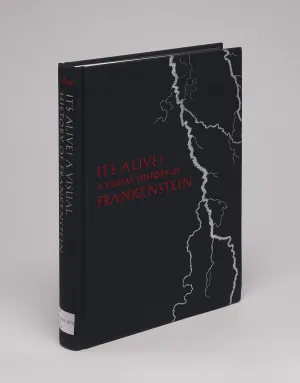Reading List: Halloween and the Supernatural
October 15, 2021
By Ralph Baylor, Interlibrary Loan and Document Delivery Lead, Frick Art Reference Library
With the arrival of autumn, the Frick Art Reference Library has conjured up a recommended reading list inspired by Halloween. The selected titles below offer a scholarly perspective on the traditional imagery often associated with the holiday, from Frankenstein and witches to esoteric practices and the horror genre.
The publications on this list are available for consultation by appointment in our reading room at Frick Madison.
-
Gothic: Four Hundred Years of Excess, Horror, Evil and Ruin
By Richard Davenport-Hines (1999)
Travel through the dark history of the gothic sensibility with this survey covering art, literature, film, music, and more. Davenport-Hines traces the goth aesthetic through time, beginning with Salvator Rosa’s depiction of the seventeenth-century eruption of Mount Vesuvius all the way to the twentieth-century films of director David Lynch and the music of The Cure. (This title is also available as an e-book, accessible through our Open Library partnership by creating a free Internet Archive account.)
-
It’s Alive!: A Visual History of Frankenstein
By Elizabeth Campbell Denlinger (2018)
Reanimate your interest in classic horror with this catalog published for the 2018 exhibition held at The Morgan Library & Museum in New York. Celebrating the two-hundredth anniversary of the publication of Mary Shelley’s Frankenstein, the catalog illustrates the development of Frankenstein’s monster in the public imagination. The monster, originally written to be erudite and philosophical, adapted over time in genres from comic books to stage plays into our current image of the silent brute, popularized most famously on screen by Boris Karloff (1887–1969).
-
The Tarot of Leonora Carrington
By Susan Aberth and Tere Arcq (2020)
Dive deeper into the esoteric with a dazzling rendition of the Major Arcana—twenty-two special cards in the tarot deck—by British-born Surrealist painter Leonora Carrington (1917–2011). Accompanying essays explore the artist’s use of symbols in her tarot and the impact of the imagery’s repetition throughout her body of work.
-
Baroque Horrors: Roots of the Fantastic in the Age of Curiosities
By David R. Castillo (2010)
Uncover the roots of modern horror fantasy, the appeal of reality television, and even the dynamics of spectator sports in this wide-ranging book on early modern horror and its manifestations in current culture. The author traces these contemporary forms of media back to the Spanish Baroque period and its explorations of the grotesque, the fantastical, and the theatrical.
-
Bruegel’s Witches: Witchcraft Images in the Low Countries between 1450 and 1700
By Renilde Vervoort (2015)
View depictions of witches and witchcraft with this catalog published in conjunction with the 2015 exhibition of the same name. The catalog argues that contemporary images of witchcraft in popular culture have their origins in the work of artist Pieter Bruegel the Elder (ca. 1525–1569). The witch hunts associated with Bruegel’s native Flanders in the fifteenth through seventeenth centuries are given proper historical context, offering both fascinating and chilling insight into this slice of Dutch and Flemish cultural history.
-
Le Tarot de Salvador Dalí
By Rachel Pollack (1985)
Tap into the mystic symbolism depicted in the tarot deck of Salvador Dalí (1904–1989). This book, written in French, features full-page reproductions of the Major and Minor Arcana, all designed by the Surrealist artist. Detailed explanations of Dalí’s unique flourishes on each card accompany the images.
-
The Exquisite Corpse: Chance and Collaboration in Surrealism’s Parlor Game
Edited by Kanta Kochhar-Lindgren, Davis Schneiderman, and Tom Denlinger (2009)
Discover the Surrealist origins and contemporary interpretations of the classic parlor game known as the Exquisite Corpse (cadavre exquis). The game involves each player adding part of an image or text without seeing previous contributions in full, resulting in an amalgamated final composition. This collection of essays explores the game’s history as an artistic and literary tool for collaborative, and often monstrous, creation.
-
Ancient Magic and the Supernatural in the Modern Visual and Performing Arts
Edited by Filippo Carlà and Irene Berti (2015)
Study the ways in which early Western Christian interpretations of magic and the occult continue to influence contemporary media. Contributors to this collection of essays utilize interdisciplinary studies to link visual and performing arts across social and cultural identities.
All photos by Joseph Coscia Jr., The Frick Collection









